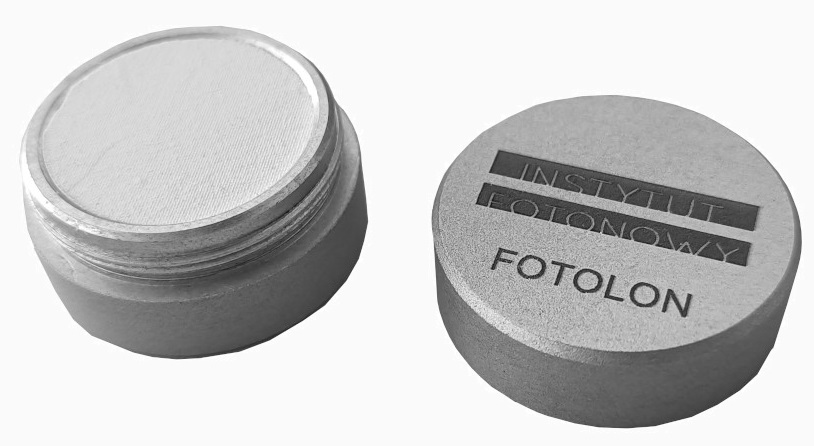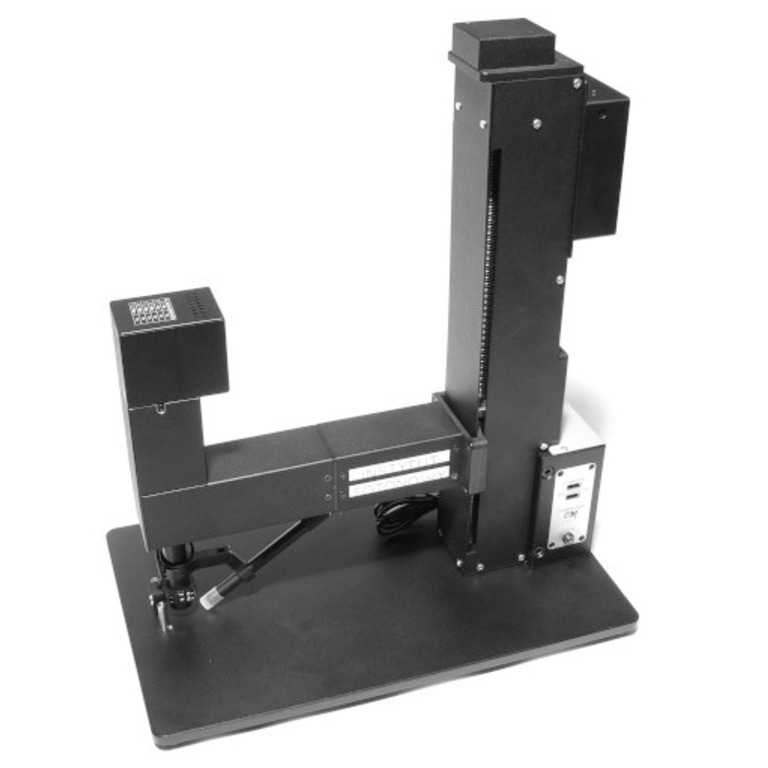Micro Fading Tester (MFT) is a scientific-grade system designed to evaluate the fading rate of colors under controlled irradiation. It is ideal for assessing the light sensitivity of exhibits to optimize their exposure conditions in museums.
Description

 Micro Fading Tester (MFT)
Micro Fading Tester (MFT)
The Micro Fading Tester (MFT) measures temporal behavior of dyes under irradiation.
MFT tests allow to rank objects in collections by their sensitivity to light.
This approach allows to adopt exhibition policies to actual data obtained for each tested object rather than use general assumptions which could be either too conservative and unnecessarily limit viewers access to the object or too optimistic and lead to irreversible light-induced damages.
The scientific grade instrument is equipped with up to 6 ultra precise LEDs on a motorized holder. One can perform light aging of samples with UV, Vis or NIR LED source and assess the color change with a white LED.
Some users opt for several white LED with different color temperatures, so they can match them to those used in galleries.
Specifications
⬛ Spot diameter: 0.5 mm
⬛ Spectral range: 400–750 nm
⬛ Spectral resolution: 2.50 nm
⬛ Vertical motion range: -80 to 200 mm
⬛ Light source: up to 6 motorized LEDs
⬛ Focus point search: automatic
⬛ Maximum light intensity at focus: about 4 mW (depends on selected LED)
⬛ PC connectivity: USB 2.0
⬛ Size: 250 x 400 x 440 mm (w x l x h)
⬛ Size when folded: 440 x 400 x 80 mm (w x l x h)
⬛ Mass: 5 kg
Software Specifications
⬛ Full control of the instrument: max. light output, intensity of dimmed light for positioning, speed of autofocusing, ..
⬛ Option to record series of reflectance spectra
⬛ Automatic test ending according to the user selected criteria: time, dose or color change
⬛ One button calibration for background and white standard
⬛ Fast high precision autofocusing
⬛ 3 pre-selected light intensity values for quick operations
⬛ % reflectance reading available
⬛ Sample fading can be compared with user generated curves for Blue Wool standards or other samples
⬛ Instant access to colorimetric values with color difference ΔE76 and ΔE2000 according to CIE76 and CIE2000 standards
⬛ Color change displayed on screen
⬛ Automatic generation of reports of a faded sample by a single button
⬛ Automatic radiometric and photometric calibration of the light source with the Light Power and Intensity Detector
Operation
The MFT allows to measure color change under illumination in a non-destructive way. The spot of light on a sample has only 0.5 mm in diameter, and the total color change (∆E) for the selected point is constantly monitored during the measurement. The operator and/or instrument software can stop the test when ∆E reaches a selected threshold value (i.e., below the level of just noticeable difference). In practice, for non-glossy objects, fading marks are never visible unless fading was performed to reach extreme ∆E values (>15).
The micro fading tests could be performed for nearly all classes of materials found in museum collections, and is particularly suited to study fugitive objects (works on paper – manuscripts, prints, watercolors; canvas paintings; textiles). Some classes of objects cannot be tested by the MFT method or their testing is difficult to perform or interpret the obtained results – objects of a very high light stability and objects interacting with light in a non-typical manner (highly reflective or transparent). The MFT instrument can be regarded as portable and so it can be moved within the museum to the objects’ location, which is particularly important in the case of large artefacts (e.g., wall paintings, sculptures, maps) or objects of significant value.
Macro Fading Tester is ready to work in vertical position. The instrument is equipped with the standard tripod holding, which allows mounting the instrument in vertical position to examine large objects that cannot be transported (walls, frescoes, sculptures, etc.).
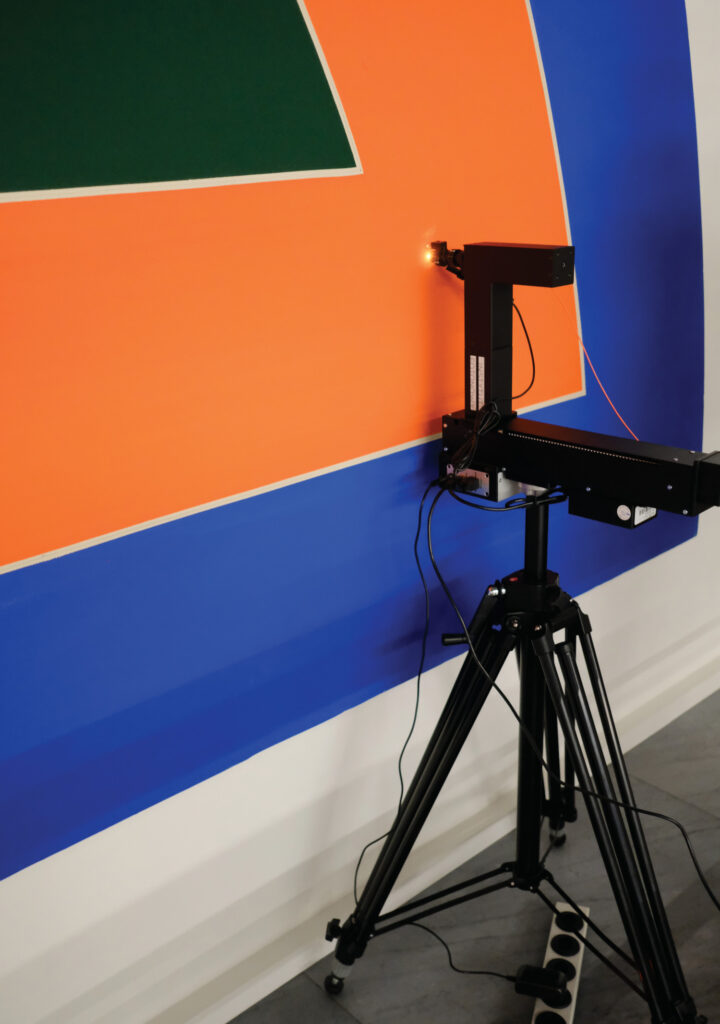
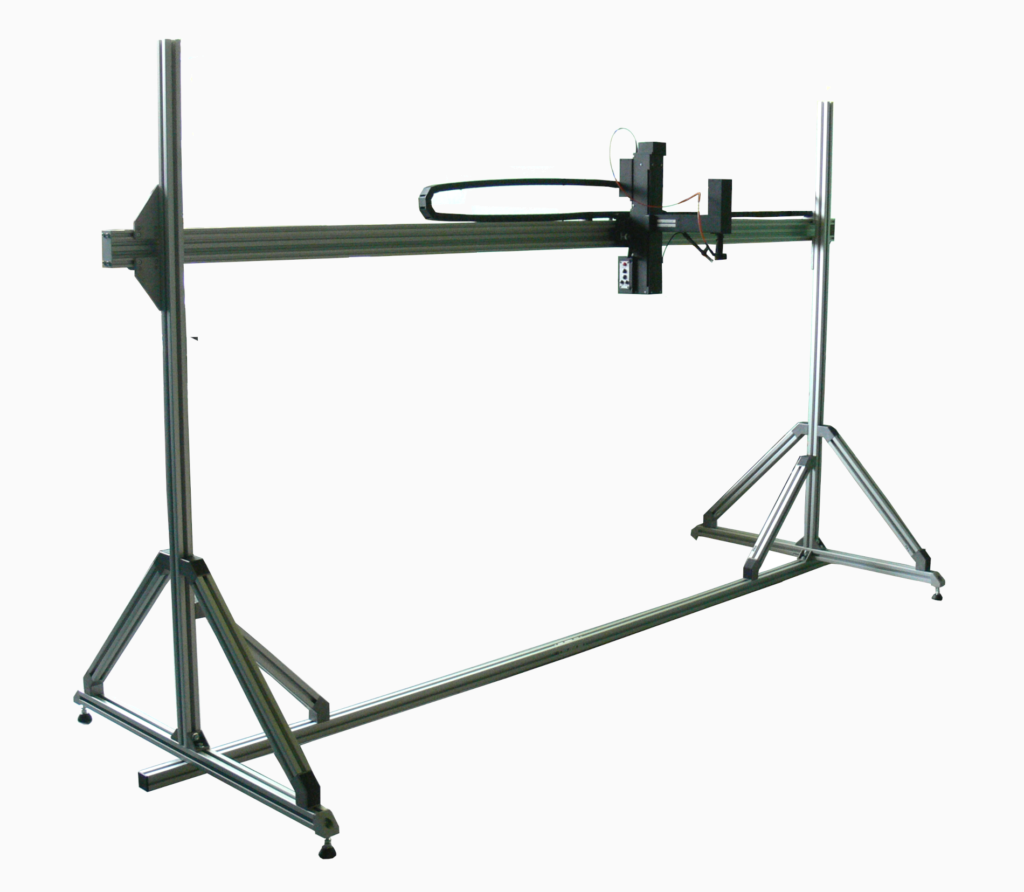
The Macro Fading Tester with the motorized horizontal stand extension allows the Micro Fading Tester to be installed on a stand with motorized, sliding fixing. This fixing provides stable placement of the instrument above the examined object and enables its smooth movement. The presented solution is particularly helpful for examining:
⬛ Large
⬛ Flat
⬛ Horizontal
⬛ Objects such as tapestries, arrases, posters, or any other large works of art laying on a tabletop.
Accesories
🡆 UV-VIS Radiometer & Photometer with Silicon photodiode
- To evaluate the light power and intensity reaching the surface.
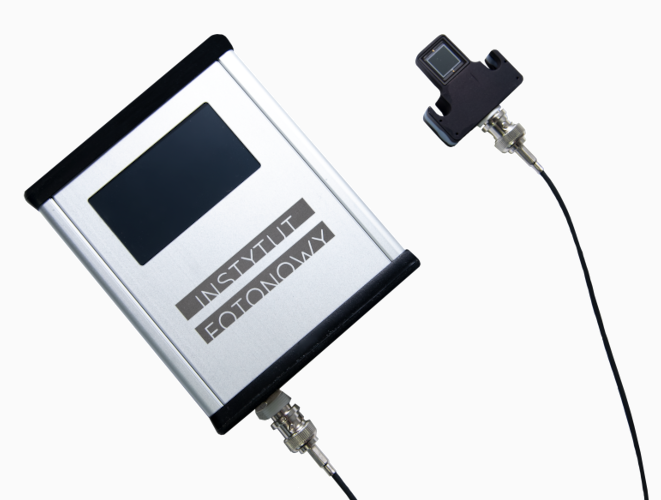
🡆 White Standard
- For reference reflectance measurements
